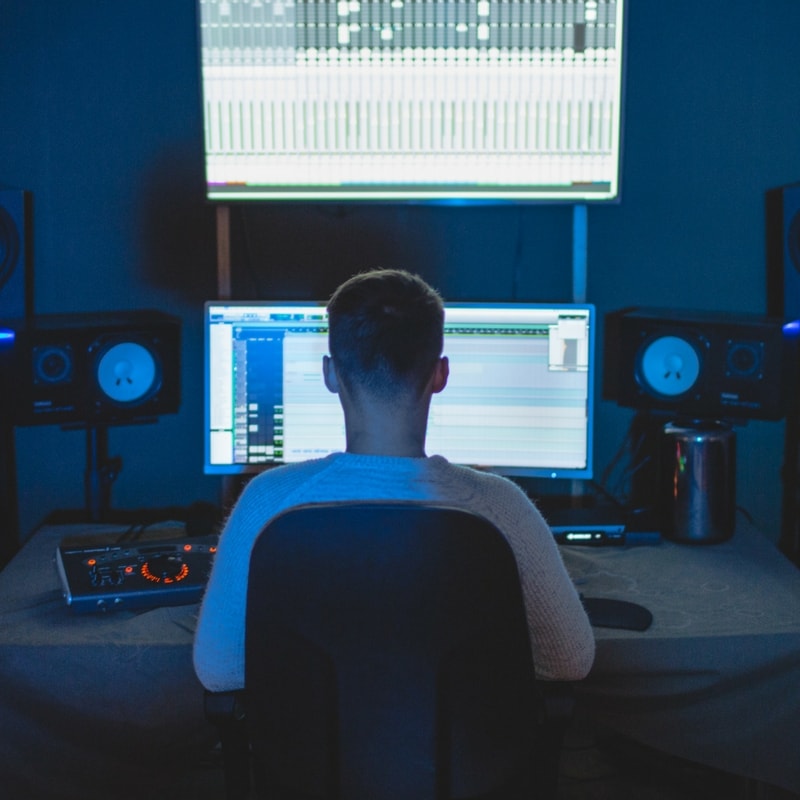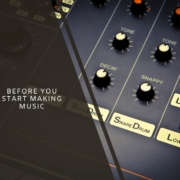Ableton MIDI Tools And Workflow Optimization
Whatever your level of mastery of Ableton Live is, you might have occasionally seen some advanced tutorials on YouTube and wondered if these were for you. While I will cover some of the advanced techniques I use below, I want to introduce the topic of what advanced techniques are and why you’d like to use them. It’s one thing to be interested in them, but sometimes, simple might be even more powerful than something advanced and complicated unless you want to do something complicated.
Whenever I have students who ask about advanced techniques, we always end up in a rabbit hole conversation about what is advanced in the first place or why one would want to use that. We talk about ambient music, IDM, EDM, or music that seems to be advanced. The thing is, techniques are always divided into categories, and that’s where it all begins.
- Live performance.
- Arrangements.
- Sound Design.
- Mixing.
While music production is a non-linear series of phases that go round and round, you initially use a technique to replicate a specific effect/sound or solve a roadblock. To know which technique you want or need to use, you’ll first need to be able to name the issue you’re facing. That might be difficult because sometimes, we don’t even know we have an issue.
Circular learning Instead of Linear
One of the issues many students who work with me have faced with traditional learning or online classes is that they use a linear approach to teaching and a mono-directional state of lesson sharing. The linear approach is basically like cooking, where you follow steps on the how-to with a result at the end. This issue in electronic music-making is that experiences are more like a tree of possibilities than a unique result. Think of a tree as an entity with multiple roots merging into a core and expanding in multiple branches. It’s the same with music: your roots come from various spaces, and your future should lean towards a wide expansion of possibilities instead of a one-directional place.
Mono-directional lessons mean that you receive information and then apply it. I don’t believe in that method so much because I’m curious, always wanting to know more. Curiosity is one of the most important traits for learning electronic music. I prefer a bi-directional method, which means I will get to know the student, where he’s coming from, how he learns and where he wants to go.
The approach we use is circular when it comes to learning, and it is mainly about understanding the roadblocks and then using strategies to overcome them. This will lead to explore techniques.

Notes from a private class I gave. Working, learning in a circular motion.
As you can see, we start by keeping the student in a state of flow, but when they encounter a roadblock, we have a strategy for finding solutions within an approach.
Now, let’s see how some techniques will work for them.
Problem Solving and Fixing them
It’s one thing to encounter technical difficulties, but it’s another thing to face technical limitations. Sometimes, you don’t know that you don’t know there is a problem, and that’s tricky. In teaching, passing all the knowledge to a student never proved to work. One of the best ways to learn is to start making a song, a miniature or a little live experiment.
As Live came to 2024 with a new version (12), one of the first things that came to my attention was how the whole midi section evolved with the direct implementation of max patches within the clip’s properties. Not long after the new version was out, two developers proposed a series of advanced tools, and I’ll explain below some of the potential issues they’re covering.
MIDI Tools by Phillip Meyer
The first one that piqued my curiosity was Phillip’s MIDI Tools collection. As the name states, it’s a collection of MIDI-oriented tools divided into two categories.
The categories are new in Live 12. They consist of containers that transform signals or create new ideas. This approach is similar to modular synths, where you have sources and modifiers. So, it is not alien to anyone who comes from that world. It was like that in version 11, but it was not explained in that fashion.
In a way, the new version of Live goes to its roots: playing live.
The tools Meyer offers are numerous. Here they are and what they do.

Blocks
Blocks
Category: Generator
What it does: Mainly used for rhythmical generation. Creating abnormal patterns in an unusual way
What issue it can help with: Breaking your percussion habits, making breakbeats or strange beats. Useful for breaking writer’s block.
I think this one is my favourite. You say how many beats or notes you want and then play with the sliders. Depending on the position given, the notes will be placed proportionally. It’s not euclidean sequencing; it’s a logic of its own.
Phase Pattern
Category: Generator
What it does: Creates sequences logarithmically.
What issue it can help with: It can create a bouncing ball effect, meaning that beats can take speed or change halfway. This is useful for breaks, transitions, effects, and rolls.
This one is fun. It is a good way to create elastic-sounding patterns where things speed up, and it can also be a way to change pace during a song.
Turing Machine
Category: Generator
What it does: Emulates what the Turing machine does in the modular world.
What issue it can help with: Coming up with new melodies and patterns. It is excellent for breaking writer’s block or providing complementary, supportive ideas.
If you’re unfamiliar with what the Turing machine does, I’d encourage you to look at this. It’s a system invented by Allan Turing during WWII to decypher the Nazi codes. Now, we can use it to generate sequences, melodies or patterns.
Polyrhythm
Category: Generator
What it does: Makes multiple patterns at once.
What issue it can help with: Making complex sequences, percussive or melodic.
If you’re unfamiliar with polyrhythms, I would encourage you to look into this. Basically, polyrhythms are a way of programming patterns that aren’t the same length, making the sequence non-linear and not always falling under the same loop. It can have a hypnotic effect and confuse people about where an idea starts and ends, typical in African percussion. This generator uses Euclidean algorithms to create its sequences.
Condition
Category: Transformer
What it does: It takes an idea, and it can propose alternatives upon certain conditions.
What issue it can help with: Finding different variations for a sequence.
Why settle on an idea when you can have unlimited alternatives and choose the best for your arrangements? This transformer will do exactly this.
Develop
Category: Transformer
What it does: Similar to condition but time-related. It takes an initial idea and then develops it, fades it out gradually. See it as an intelligent note-enhancing tool.
What issue it can help with: It can be a good way to develop an idea unexpectedly.
This one is similar to the conditions. It works well in the Arrangement section, where you take an idea and then see multiple ideas evolve from an initial idea. It’s not condition-based but more of a way to have an idea evolve.
Divs
Category: Transformer
What it does: It takes a note and subdivides it.
What issue it can help with: it’s not a problem that it fixes, but it makes ratcheting out of anything.
This technique has been popular with Trap lately. It is made as a buddy for the Blocks tool.
Draw
Category: Transformer
What it does: Gives a melody to pattern or life in different ways
What issue it can help with: Turn a sequence you generated into a melody. You can easily draw pitch or other characteristics and see how it goes.
It is a spontaneous way to create melodies and transform quick patterns into something else, automatically giving them a second life.

Pattern Transform
Category: transformer
What it does: Take a pattern and, upon certain rules, revise melodies and make decisions for you.
What issue it can help with: Slight modifications to a hook can help you create alternatives for other sections of your song.
See it as a condition-based decision-making assistant.
Segments
Category: transformer
What it does: Subdivise a note, but it is condition-based.
What issue it can help with: Similar to Divs but with an approach similar to condition.
Ideal for complex IDM micro glitch patterns.
Feel
Category: transformer
What it does: It’s a humanizer.
What issue it can help with: To break from a robotic, stiff sequence and induce it with a swing and a human fee.
Shift
Category: transformer
What it does: Take a pattern and then shift it around, either pitch, duration, velocity, etc.
What issue it can help with: Useful for having variations on a sequence or to test the shift of its characteristics across a loop.
These tools are what I would call a good selection of roadblock removers. They’re not basic, but anyone can use them, and with a bit of patience, they can provide solid ideas or help move forward to variations.
I would say they’re part of my essentials.






















Leave a Reply
Want to join the discussion?Feel free to contribute!